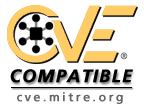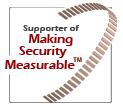Executive Summary
| Informations | |||
|---|---|---|---|
| Name | CVE-2023-50868 | First vendor Publication | 2024-02-14 |
| Vendor | Cve | Last vendor Modification | 2024-11-21 |
Security-Database Scoring CVSS v3
| Cvss vector : N/A | |||
|---|---|---|---|
| Overall CVSS Score | NA | ||
| Base Score | NA | Environmental Score | NA |
| impact SubScore | NA | Temporal Score | NA |
| Exploitabality Sub Score | NA | ||
| Calculate full CVSS 3.0 Vectors scores | |||
Security-Database Scoring CVSS v2
| Cvss vector : | |||
|---|---|---|---|
| Cvss Base Score | N/A | Attack Range | N/A |
| Cvss Impact Score | N/A | Attack Complexity | N/A |
| Cvss Expoit Score | N/A | Authentication | N/A |
| Calculate full CVSS 2.0 Vectors scores | |||
Detail
| The Closest Encloser Proof aspect of the DNS protocol (in RFC 5155 when RFC 9276 guidance is skipped) allows remote attackers to cause a denial of service (CPU consumption for SHA-1 computations) via DNSSEC responses in a random subdomain attack, aka the "NSEC3" issue. The RFC 5155 specification implies that an algorithm must perform thousands of iterations of a hash function in certain situations. |
Original Source
| Url : http://cve.mitre.org/cgi-bin/cvename.cgi?name=CVE-2023-50868 |
Sources (Detail)
Alert History
| Date | Informations |
|---|---|
| 2024-11-25 09:27:02 |
|
| 2024-06-10 21:27:29 |
|
| 2024-03-07 21:27:31 |
|
| 2024-03-04 09:27:30 |
|
| 2024-02-29 09:27:28 |
|
| 2024-02-26 21:27:28 |
|
| 2024-02-23 09:27:27 |
|
| 2024-02-21 17:27:28 |
|
| 2024-02-19 09:27:26 |
|
| 2024-02-18 09:27:25 |
|
| 2024-02-17 00:27:26 |
|
| 2024-02-15 09:27:26 |
|
| 2024-02-15 05:27:22 |
|
| 2024-02-14 21:27:26 |
|





